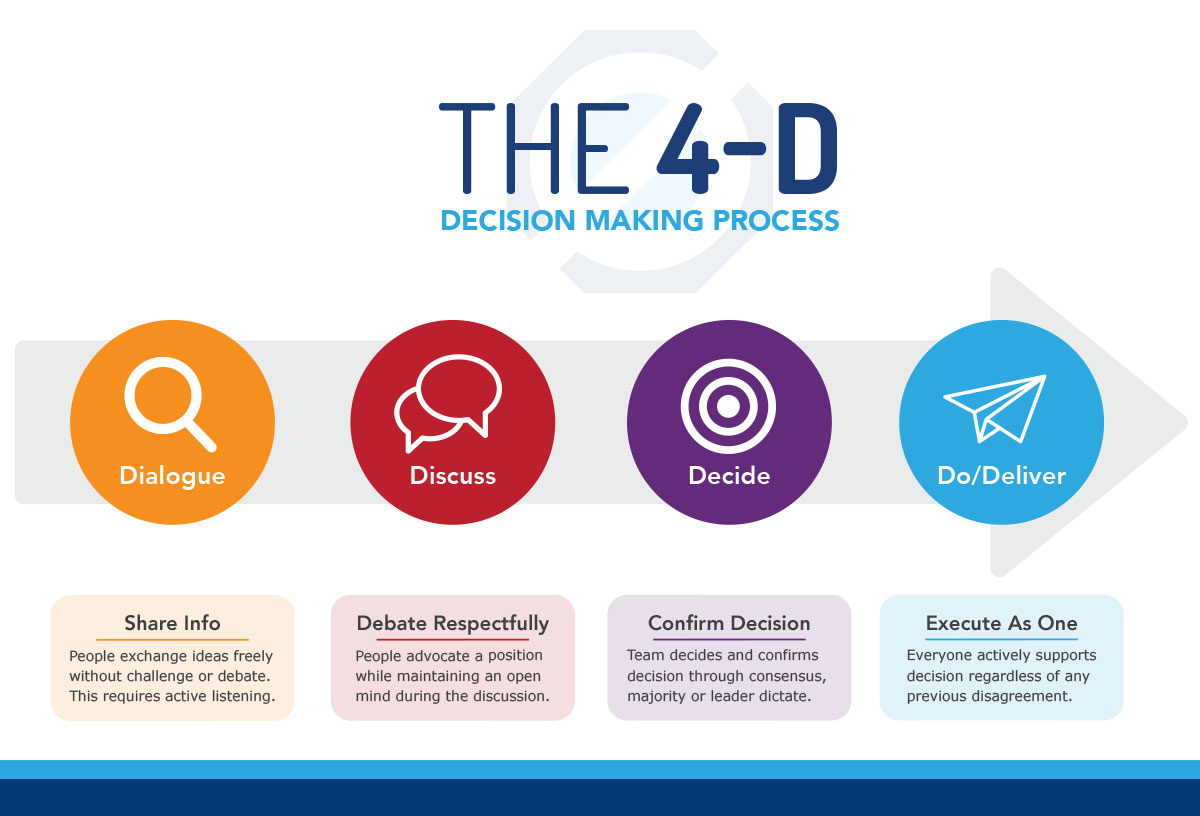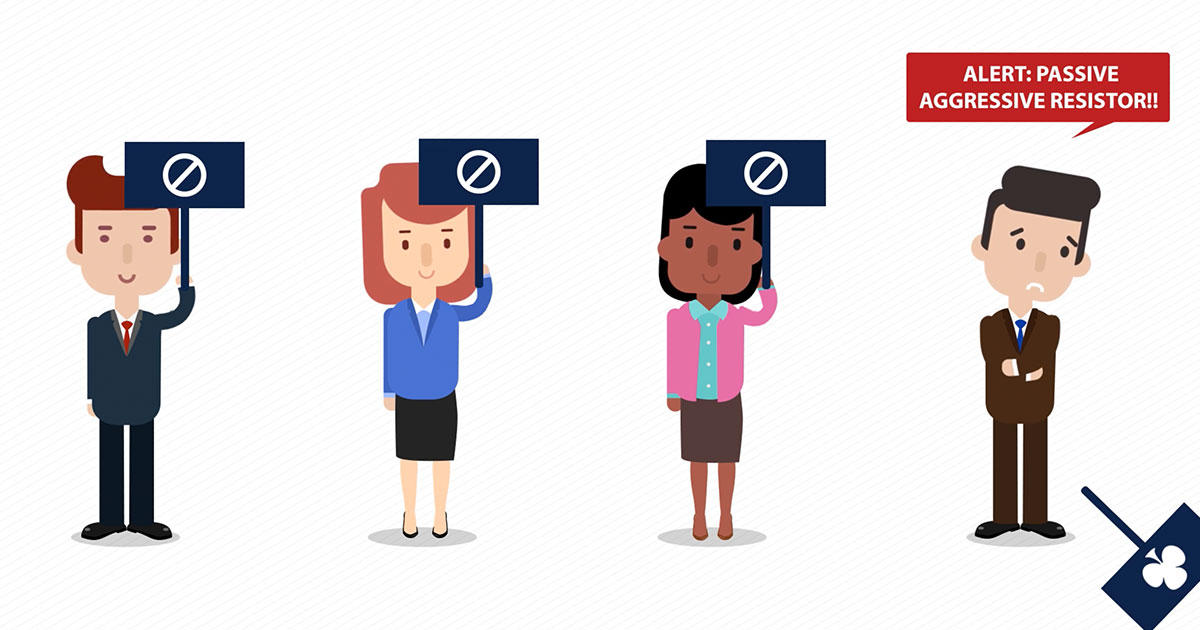By Ted Powell – November 6, 2017
Many leaders and their teams struggle to make and keep critical decisions. They watch with envy more successful teams that seem to know how to streamline effective decision making and execute decisions cohesively.

Here is what those teams have done: Built a strong decision-making process centered on a straightforward four-step process. That one change makes all the difference!
One of my clients, Carl, is the CEO of a high-tech start-up company full of seasoned and intelligent executives. As with many high-powered groups with differing ideas, his executive team struggled to make and stick to key decisions. This was a firm-threatening issue, as their rapidly-changing industry required the frequent shifting of their business proposition, which involved many important decisions that had to be made and acted on swiftly.
In a start-up, most players know that one or two bad decisions can sink the company. “We are one mistake away from having our collective dream evaporate!”, one of Carl’s executives would exclaim, usually during a tough discussion.
Another team member lamented that “decision-making during team meetings felt like swimming through peanut butter.” These self-assured thinkers engaged in endless debates, where each person fought hard to win the day. Ultimately the exhausted team members made a decision, but it inevitably lacked collective support.
The “winners” left satisfied. The “losers” left saddled with unresolved concerns about the decision’s viability. The collective angst undermined trust to the point where each member doubted the team’s ability to lead, execute and succeed.
The effects of this also rippled out to employees, who watched the very visible executive schisms play out, and started to lose confidence in the leadership team and company destiny.
How You Decide is as Critical as What You Decide
Seeking a better way to collaborate on decisions, Carl found the 4-D Model for Decision-Making. After exploring the method together, he and the team agreed to change their decision-making process. Within just a few meetings, the atmosphere changed. Each person came to meetings energized, knowing that they would be heard. And those long, forceful rants that used to be so disruptive could be stopped by a call to “dialogue”. The team also invested 15-minutes at the end of each meeting to clarify the decision and how they would communicate it to the rest of the company. Occasionally, team members would veer off-script and put their own spin on the agreed-upon direction. Those blips were quickly corrected. Team members were now emboldened to challenge the wayward peer by saying, “Let’s re-clarify our decision!”
If you ever have to ask, “Why is it so hard for us to make a decision?”, you now have a simple answer: Your decision-making process needs overhaul. Click here to download and use the 4-D Model For Decision-Making to improve your team’s ability to generate and execute better ideas. There are four key steps in the process:

Stage 1:Dialogue
In this stage, people exchange ideas freely without challenge or debate. Each presenter should preface their idea with “what if?”, signaling the listener to dream without objecting or challenging the idea. The listener asks for clarification, builds on the idea or poses a question. Questions reflect a healthy skepticism or curiosity aimed at gathering more information (versus undermining the idea).
Learning to dialogue effectively is not easy. You must stifle the need to prove your value by having the right idea or solution. It requires active listening, questioning for understanding, and building upon other’s good ideas.
Teams that dialogue substantially improve the quality and creativity of their agreed-upon solutions, while reducing the time and energy it takes to agree. When someone feels a team member (or several) are gridlocked, stop the debate and say, “let’s dialogue this!”. That simple cue resets the mindset of the group, relaxing the “here we go again” tension that could start to fill the room.
Most frustrating team discussions skip the dialogue stage and move right into discuss mode. Resist that!
Stage 2: Discuss
Enlightened with a shared understanding of all facts, ideas and information, the team moves into discuss mode. Each team member advocates their point of view. People challenge each other’s logic, facts, and perceptions in a respectful manner. You still listen and bend your view if relevant new information emerges.
If someone feels they are not being heard, they can always say, “let’s dialogue”, as a way to shift the advocate out of their entrenched position.
Stage 3: Decide
Eventually, we must decide! First, the team must decide, in advance, how they are going to decide. Should the leader decide after thorough dialoguing and discussing? Is the decision so significant that we should invest the extra time to gain full team consensus? Do we take a vote and accept the majority rule in a less critical case?
The biggest mistake I see teams make is skipping this step. Not establishing how we decide promotes frustration and chaos. People dread suffering through a prolonged and debilitating battle where the team capitulates to the strongest (or most stubborn!) voice in the room.
Stage 4: Do
At this point, everyone is happily-aligned around the ultimate decision? Right? Not necessarily! We humans have a hard time abdicating deeply-held views and beliefs. Supporting a decision that mirrors your view of the world is easy. When it doesn’t, we can become what I call a “passive aggressive resistor.” This person salutes the decision in the meeting, but promptly expresses reservations or objections to others after the meeting. This subdued energy and tepid commitment will affect execution. Employees are quite sensitive to subtle signs that their leaders are not on the same page.
For complex and impactful decisions, the leadership team conducts a final round, where each person affirms their wholehearted support for the decision, despite any earlier misgivings or apprehensions. Then, determine how each person will communicate that support to their respective teams. This ensures consistent messaging, which inspires confidence that this team is leading the company with strong resolve, purpose and coherence. Often, this thorough closure does not occur after one meeting, because the team runs out of time and energy. Don’t let that happen! Schedule another quick meeting to get the Do Step fully done.
The 4-D Decision-Making Process transformed the prospects of Carl’s high-tech start-up. It matured into a successful and stable entity. Employee, investor, and customer confidence expanded substantially, as a direct result of having a much more focused and unified leadership team. Clear and consistent direction was at the root of this success, which the executive team still attributes specifically to the 4-D process.

